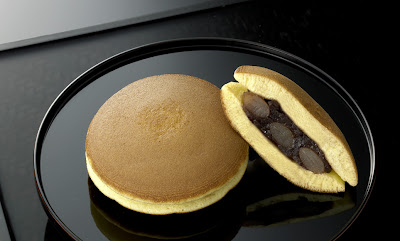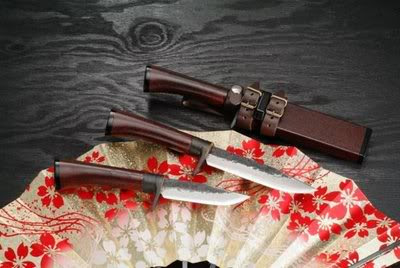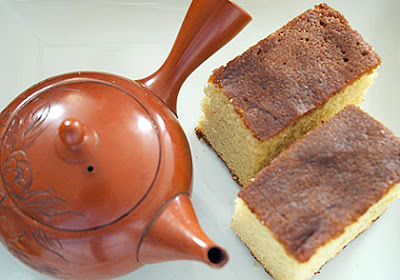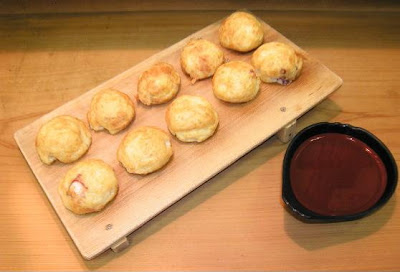Thursday, December 24, 2009
The ninja
Wednesday, December 23, 2009
Ninjutsu martial
 Ninjutsu martial movement only kicks, throws, breaks, and attack. Then, equipped with self-defense techniques such as slash, rolling and technical aids such as escape, sink, and other special techniques. However, in practice the ninja to avoid direct contact with his opponent, thus throwing a variety of tools, palm leaves, shoot, and more often used disguises. In contrast to other martial arts. Ninjutsu techniques taught espionage, sabotage, paralyzing your opponent, and dropped his opponent mentally. Science is used to protect their ninja family. What did the ninja is hard to understand.
Ninjutsu martial movement only kicks, throws, breaks, and attack. Then, equipped with self-defense techniques such as slash, rolling and technical aids such as escape, sink, and other special techniques. However, in practice the ninja to avoid direct contact with his opponent, thus throwing a variety of tools, palm leaves, shoot, and more often used disguises. In contrast to other martial arts. Ninjutsu techniques taught espionage, sabotage, paralyzing your opponent, and dropped his opponent mentally. Science is used to protect their ninja family. What did the ninja is hard to understand.Tuesday, December 22, 2009
the principles of Ninpō.
Monday, December 21, 2009
The ninja histories
The ninja called by the daimyo to gather information, damage and destroy the armory or storage of food, and to lead an army raid on the night that the ninja get hari.karena special latiham. Ninja remain active until the Edo period (1600-1868), which finally addressed by the government authority in the age of edo
Sunday, December 20, 2009
Furikake
Similar seasoning Furikake called Chazuke (Chazuke no moto) sprinkled over the rice and doused with hot water or hot green tea to make Chazuke. When making onigiri, rice is sprinkled Furikake stirred it before formed by a fist.
All the items you want to make Furikake destroyed until smooth and slightly flavored. Once dried, the other content (such as nori, sesame seeds, or dried vegetables) are added to the Furikake for seasoning. Furikake fresh (Furikake name) is a variation of Furikake not dried. All the ingredients are mixed and stirred only be one. The material is for fresh Furikake anchovy, katsuobushi shavings, small pieces of seaweed, kombu, abon fish or other seafood.
Labels: japanese foods
Posted by iko at 12:30 PM
Saturday, December 19, 2009
A Look at the Shun Santoku Knife
For people who prepare food in the kitchen, they know how important it is to have the right equipment. Knives are very useful and it is a must-have tool for anyone who is preparing food in the kitchen. There are many different knives available; however a few stand out for their quality, sharpness and craftsmanship. This article will take a look at one particular knife, the Shun Santoku Knife.
The Shun Santoku Knife is a Japanese knife that is multipurpose. It is the perfect knife when it comes to mincing, slicing, dicing and chopping. It does all of these tasks exceptionally well and with precision. This accuracy is a result of the precision-forged stainless steel blade that is high carbon. This blade also has an extremely sharp edge. The quality of the Shun knife is top notch as it has a Damascus look, courtesy of 16 layers of stainless steel. The knife also has a great handle that will provide comfort and also make it easier to cut your way through your food.
This is a great knife for the kitchen because it is extremely versatile. You can cut a wide variety of food products very easily due to the sharp blade. The design of the knife makes it easy to slice, dice, chop and mince with no effort or problems. Aside from a useful kitchen item, with the Shun Santoku, people are getting a high quality knife. You can be sure that this knife will last for a long time as it is finely crafted and made out of the best materials around. These knives are worth every penny and you can be sure you will be using it years after you first use it.
The Shun Santoku Knife is a great product and if you are looking for a good knife for the kitchen then you should definitely consider this Asian chef knife. It will be able to handle any job and you will be totally satisfied with this purchase.
Labels: Japanese Weapon
Posted by iko at 10:44 AM
ninja in Japanese history
Shinobi or Ninja (in Japanese: 忍者, literally, "A person who moves in secret") is an assassin trained in the art of ninjutsu (the art movement roughly quiet) Japan. Ninja, like samurai, follow their own special rules, called Ninpō. According to some observers ninjutsu, the expertise of a ninja is not murder but infiltration. Thus, the special skills of a ninja is to infiltrate with or without sound. Today, the ninja as legends, such as a revered figure, appears in those games and cartoons of children, as well as a film genre of martial arts action.
Friday, December 18, 2009
donburi
Labels: japanese foods
Posted by iko at 11:24 AM
Champon
Material in the form of pork, seafood in season, Kamaboko, and vegetables (cabbage, bean sprouts) pan-fried with lard. Broth of a mixture of pork bones or chicken bones are added to boil the noodles until tender. In Korean cuisine is similar Champon Jjamppong (짬뽕), and cooked with extra chili. In Okinawa, Champon means a plate of rice with side dishes on top
Labels: japanese foods
Posted by iko at 11:01 AM
Thursday, December 17, 2009
Dorayaki
In Indonesia, is confectionary foods was introduced in Indonesia along with the anime Doraemon. Robot character Doraemon has a penchant for eating cake Dorayaki. Dorayaki sold in pastry shops in Indonesia, it has adapted to local tastes such as Dorayaki contains a mixture of chocolate and cheese. Dorayaki also known in Indonesia with the title Obanyaki.
In Japan, Obanyaki better known as Imagawayaki. Although Obanyaki have similar shapes with Dorayaki, cakes Obanyaki thicker than Dorayaki. Obanyaki also usually baked in front of the buyer while Dorayaki previously roasted and sold in packaging.
Labels: japanese foods
Posted by iko at 11:52 AM
Anpan
 Anpan (Anpan) is a sweet bread with red bean paste content.
Anpan (Anpan) is a sweet bread with red bean paste content.Bread is not a common food eaten by the Japanese before, but now many types of bread which is a typical Japanese food, such as: meron-pan, kurimu-pan, herb-pan, front koshian, OGURA an-pan, cherry an-pan, korone, and others. This may be because people versed in introducing Japanese food traditions from other countries and adapt to suit Japanese tastes.
An-pan was created in 1874, by the owner kimuraya bread in the Ginza district of Tokyo. Initially Yasube'e Kimura, the owner is trying to make bread according to Japanese tastes. Then by taking the idea of steamed manju is a Japanese traditional foods, bread didapatlah soft, sweet, easy to eat and fits well with the Japanese taste.
Labels: japanese foods
Posted by iko at 10:44 AM
Japanese knives 2
Labels: Traditional Japanese Weapons
Posted by iko at 1:37 AM
Wednesday, December 16, 2009
Japanese House
Japanese knives
Labels: Traditional Japanese Weapons
Posted by iko at 10:33 AM
Traditional Japanese kitchen knives
Labels: Traditional Japanese Weapons
Posted by iko at 9:42 AM
Tuesday, December 15, 2009
Art for Killing Japanese Knives (5)
 Unlike other knives, such as German knives, Japanese are designed to be very lightweight, with a fine edge. Their steel blade is brittle and sharp, unlike other knives that are designed to be tough and flexible. As a result, these Japanese knives will be very, very sharp. The edge is less likely to bend, so it will stay sharper for longer. Japanese knives must be hand washed because the dishwasher may damage the blade, but quality Japanese blades don't usually need as much sharpening to attain a razor-sharp edge, but may need more frequent sharpening because the blade edge is not as durable.
Unlike other knives, such as German knives, Japanese are designed to be very lightweight, with a fine edge. Their steel blade is brittle and sharp, unlike other knives that are designed to be tough and flexible. As a result, these Japanese knives will be very, very sharp. The edge is less likely to bend, so it will stay sharper for longer. Japanese knives must be hand washed because the dishwasher may damage the blade, but quality Japanese blades don't usually need as much sharpening to attain a razor-sharp edge, but may need more frequent sharpening because the blade edge is not as durable.Labels: Japanese Weapon
Posted by iko at 3:01 AM
Monday, December 14, 2009
Art for Killing Japanese Knives (4)

Labels: Japanese Weapon
Posted by iko at 11:50 AM
Art for Killing Japanese Knives (6)
Labels: Japanese Weapon
Posted by iko at 10:37 AM
Sunday, December 13, 2009
Saturday, December 12, 2009
Castella or Kasutera (Kasutera)
The name "Castella" comes from Portuguese pao de Castella (bread of the region Castilla). Castella is generally sold in containers of rectangular boxes, and called Castella bars (sao Castella). In addition, baby Castella (Castella sized mini form of popular anime characters) a lot sold on the sidewalk when there Matsuri (traditional festival in Japan)
Labels: japanese foods
Posted by iko at 10:53 AM
Bentō
Bento is usually packed for serving one person, although in a broad sense to mean that the food provision to a group or family. Bento can be prepared at home. When purchased, bento is equipped with disposable chopsticks, following a customized flavor with toppings, such as soy sauce or bottled sauce in a mini Uster.
Bento is a typical dish of settings and colors to unsightly and inviting taste. Bento packaging always has a lid, and container can be a bento box or a rectangular tray of plastic, bread boxes, or wooden boxes lacquered crafts. Housewife in Japan is considered necessary skills to prepare bento, bento though you can buy everywhere. In Indonesia, bento cuisine began popularized fast food restaurant chain Hoka-Hoka Bento since 1985.
Labels: japanese foods
Posted by iko at 10:51 AM
Art for Killing Japanese Knives
 First take a look at the origin of the knife. Indeed a Japanese knife has diverse edge geometry as evaluated to majority of the Western producers. Also due to its stronger steel, it gives more cutting edges. The blade drops huskily to get together acutely-grounded edges and is sheep footed with spine.
First take a look at the origin of the knife. Indeed a Japanese knife has diverse edge geometry as evaluated to majority of the Western producers. Also due to its stronger steel, it gives more cutting edges. The blade drops huskily to get together acutely-grounded edges and is sheep footed with spine.Labels: Traditional Japanese Weapons
Posted by iko at 9:43 AM
History of the Samurai Sword
To uncover the history of the samurai sword we have to revisit the past during the period of the Middle Ages when the use of steel instead of bronze for bladed weapons vastly improved, single edged swords became more popular throughout Asia, and the production of the Japanese Tachi and Uchigatana began. Japanese Swords, or Nihonto are the traditional bladed weapons used during all of Japanese history. The Tachi was mainly used by cavalry with the cutting edge faced down and the curvature closer to the sword hilt. The Uchigatana was mainly used by foot soldiers and worn edge up from the belt with the curvature closer the sword point. With the evolution of military and feudal society during these times, an entirely new class of warrior emerged. They were the masters of the art of war and evolved from being simply employed as protective guards serving powerful leaders, into a completely dominant class of there own, the Samurai.
This led to the establishment of a feudalistic military that then established the Ways of the Bushido, dominating the Japanese social structure for the next 700 years. Their primary role as military knights included total and absolute allegiance for whom they were pledged to fight and if need be, die defending, which resulted in the need for a superior single bladed weapon to use in close quarter combat as well as defence. Their demand for these high quality weapons produced next generation swords of unrivalled perfection, as they had to be flexible enough to withstand direct impact without breaking, but also had to be hard enough to retain their sharpened edge.
Only the most experienced Japanese sword smiths were able to develop the forging and heat-treating methods that resulted in swords that had both of these properties, which were eventually named the katana. Even the katana itself varied greatly in style during the course of the history of the samurai sword. In the late 14th and early 15th centuries they tended to be two and a half feet long, but by the early 16th century the length was adjusted to two feet with a circular or squared tsuba hand guard and a wrapped grip that could accommodate two hands. These Katana Swords were often accompanied by the similarly made but smaller swords Wakizashi or Shoto, and the two weapons together represented the social power and personal honour of the wielding Samurai.
After many periods of war throughout Japanese history the art of sword making deteriorated and it was not until the Shinshinto Era that sword smiths returned to the forging of superior quality blades after rediscovering several lost techniques. As quickly as the Era began however the Meiji Restoration was passed which banned the possession of all Samurai Swords as arms except to a certain privileged class. As a result the ancient master sword smiths began to conceal their forged blades in simple walking sticks so that the soul of the samurai would live on, and the art of superior sword making would survive and not be lost.
Labels: Traditional Japanese dress
Posted by iko at 9:02 AM
Akashiyaki
Labels: japanese foods
Posted by iko at 4:08 AM




























